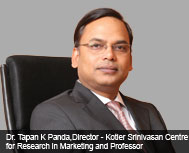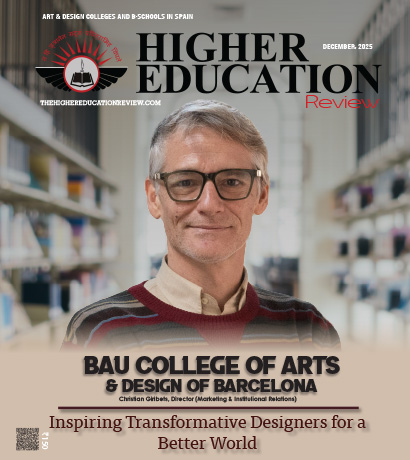Simulating an Environment for Progressive Learning

The classroom is a playground full of toys and it is the teacher that has to help his students pick the right toys for the game. MBA is such a course where the teacher's role is the most integral part of the course as it requires a flexible grip on the reins. Students need a more practical approach to the discipline in order to master its concepts and it is the tutor who needs to facilitate the student with that.
Dr Tapan K Panda, a MBA, PhD, PGDCMIS, and PGJMC degree holder believes in the same. He has over 15 years of experience in teaching and has taught in IIML, IIMK as a full time faculty. Panda visited University of Cincinnati and University of Notre, as a research scholar and has published 15 books in the area of marketing and more than hundred research papers in the area of marketing, advertising, branding and marketing communication. In his experience as a teacher he has found that the general expectation of the system is that a teacher is required to give lectures and a student is required to take notes. However, this is not a very effective mode of teaching as the student is not actively involved in the learning process. This also creates a hierarchy where it is assumed that teachers are more knowledgeable than students. "That may have been true in the previous millennium but due to the internet and the ease and availability of resource today, students are almost at par with their mentors," says Dr Panda.
The scenario where the student is passive and the teacher is the active does not exist anymore. Today's industry standards require more from a student than just good comprehensive ability. Such abilities are valued in fields where you are required to have a good memory. In my field, analytical thinking and good decision making abilities are more valued in a candidate when compared with someone who is good with textual knowledge. "That is one of the fallouts of our system many good institutes still continue to follow this mode of teaching and in the process the students remain passive learners. However, on the other side of the coin, there are also handful of institutes that are going all out to meet industry standards and making sure that their students will be good professionals in the industry," he says.
Matching the Dynamic Nature of the Industry
The industry is a very fast moving entity. It is changing and evolving with every passing decade and gradually the cycle is getting shorter. To cope with this change, it is pertinent for the education world to be at par with the industry. "The challenge here is to change the curriculum and syllabi continuously to match the changes in the industry," he adds. To change this he ensures that not only the syllabi but also the mode of his teaching is upgraded to meet today's requirements.
Dr Panda follows three modes of teaching – the case study method, simulation method and through films and movie. In his teaching experience he has found that simulation is the most effective method of all three as it involves complete participation from the student's end and the student gets a chance to apply all of the concepts learned in theory. With this method of teaching, there are hidden benefits that do not appear at first glance. Through these simulations students begin to learn important traits that are required from every individual – collaboration, ability to work in a team, leadership, analytical and decision making skills. These activities also bring out hidden talents that may not be seen from class room discussions in addition to enhancing their work skills.
Taking the Initiative to learn
Today, knowledge is so wide spread that students can be well aware of a subject even before they step into the classroom. Students need to be more aware of these resources and use them effectively. Colleges and universities subscribe to journals and newsletters of various knowledge bodies that offer course relative material. There are also numerous open source portals where study material is uploaded, for instance, "MIT offers its course material online so a student does not have to sit in a class to study the discipline," he adds.
Dynamic subjects such as marketing require vibrant modes of teaching like the ones Dr. Panda is currently employing in his classes. Such methods not only ensure the participation of the student but also learning beyond the textbooks prepares them for what they will face at work.
Dr Tapan K Panda, a MBA, PhD, PGDCMIS, and PGJMC degree holder believes in the same. He has over 15 years of experience in teaching and has taught in IIML, IIMK as a full time faculty. Panda visited University of Cincinnati and University of Notre, as a research scholar and has published 15 books in the area of marketing and more than hundred research papers in the area of marketing, advertising, branding and marketing communication. In his experience as a teacher he has found that the general expectation of the system is that a teacher is required to give lectures and a student is required to take notes. However, this is not a very effective mode of teaching as the student is not actively involved in the learning process. This also creates a hierarchy where it is assumed that teachers are more knowledgeable than students. "That may have been true in the previous millennium but due to the internet and the ease and availability of resource today, students are almost at par with their mentors," says Dr Panda.
The scenario where the student is passive and the teacher is the active does not exist anymore. Today's industry standards require more from a student than just good comprehensive ability. Such abilities are valued in fields where you are required to have a good memory. In my field, analytical thinking and good decision making abilities are more valued in a candidate when compared with someone who is good with textual knowledge. "That is one of the fallouts of our system many good institutes still continue to follow this mode of teaching and in the process the students remain passive learners. However, on the other side of the coin, there are also handful of institutes that are going all out to meet industry standards and making sure that their students will be good professionals in the industry," he says.
Matching the Dynamic Nature of the Industry
The industry is a very fast moving entity. It is changing and evolving with every passing decade and gradually the cycle is getting shorter. To cope with this change, it is pertinent for the education world to be at par with the industry. "The challenge here is to change the curriculum and syllabi continuously to match the changes in the industry," he adds. To change this he ensures that not only the syllabi but also the mode of his teaching is upgraded to meet today's requirements.
Dr Panda follows three modes of teaching – the case study method, simulation method and through films and movie. In his teaching experience he has found that simulation is the most effective method of all three as it involves complete participation from the student's end and the student gets a chance to apply all of the concepts learned in theory. With this method of teaching, there are hidden benefits that do not appear at first glance. Through these simulations students begin to learn important traits that are required from every individual – collaboration, ability to work in a team, leadership, analytical and decision making skills. These activities also bring out hidden talents that may not be seen from class room discussions in addition to enhancing their work skills.
Taking the Initiative to learn
Today, knowledge is so wide spread that students can be well aware of a subject even before they step into the classroom. Students need to be more aware of these resources and use them effectively. Colleges and universities subscribe to journals and newsletters of various knowledge bodies that offer course relative material. There are also numerous open source portals where study material is uploaded, for instance, "MIT offers its course material online so a student does not have to sit in a class to study the discipline," he adds.
Dynamic subjects such as marketing require vibrant modes of teaching like the ones Dr. Panda is currently employing in his classes. Such methods not only ensure the participation of the student but also learning beyond the textbooks prepares them for what they will face at work.

